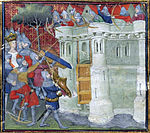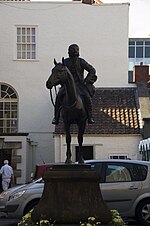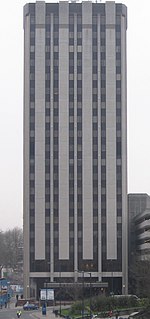Blackfriars, Bristol
1227 establishments in England1538 disestablishments in EnglandChristian monasteries established in the 13th centuryFriaries in Bristol

Blackfriars, Bristol was a Dominican priory in Broadmead, Bristol, England. It was founded by Maurice de Gaunt in 1227 or 1228. Llywelyn ap Dafydd, son of Dafydd ap Gruffydd, the last native Prince of Wales, was buried in the cemetery of the priory. Following the Dissolution of the Monasteries in the 16th century, surviving parts of the priory became a guildhall for the Smiths and Cutlers Company, the Bakers Company, a workhouse and then a meeting house for the Quakers. In the 20th century, it has housed the local register office, a theatre company, and a restaurant.
Excerpt from the Wikipedia article Blackfriars, Bristol (License: CC BY-SA 3.0, Authors, Images).Blackfriars, Bristol
Quaker's Friars, Bristol Broadmead
Geographical coordinates (GPS) Address Nearby Places Show on map
Geographical coordinates (GPS)
| Latitude | Longitude |
|---|---|
| N 51.457296 ° | E -2.58772 ° |
Address
Quaker's Friars
Quaker's Friars
Bristol, Broadmead
England, United Kingdom
Open on Google Maps










